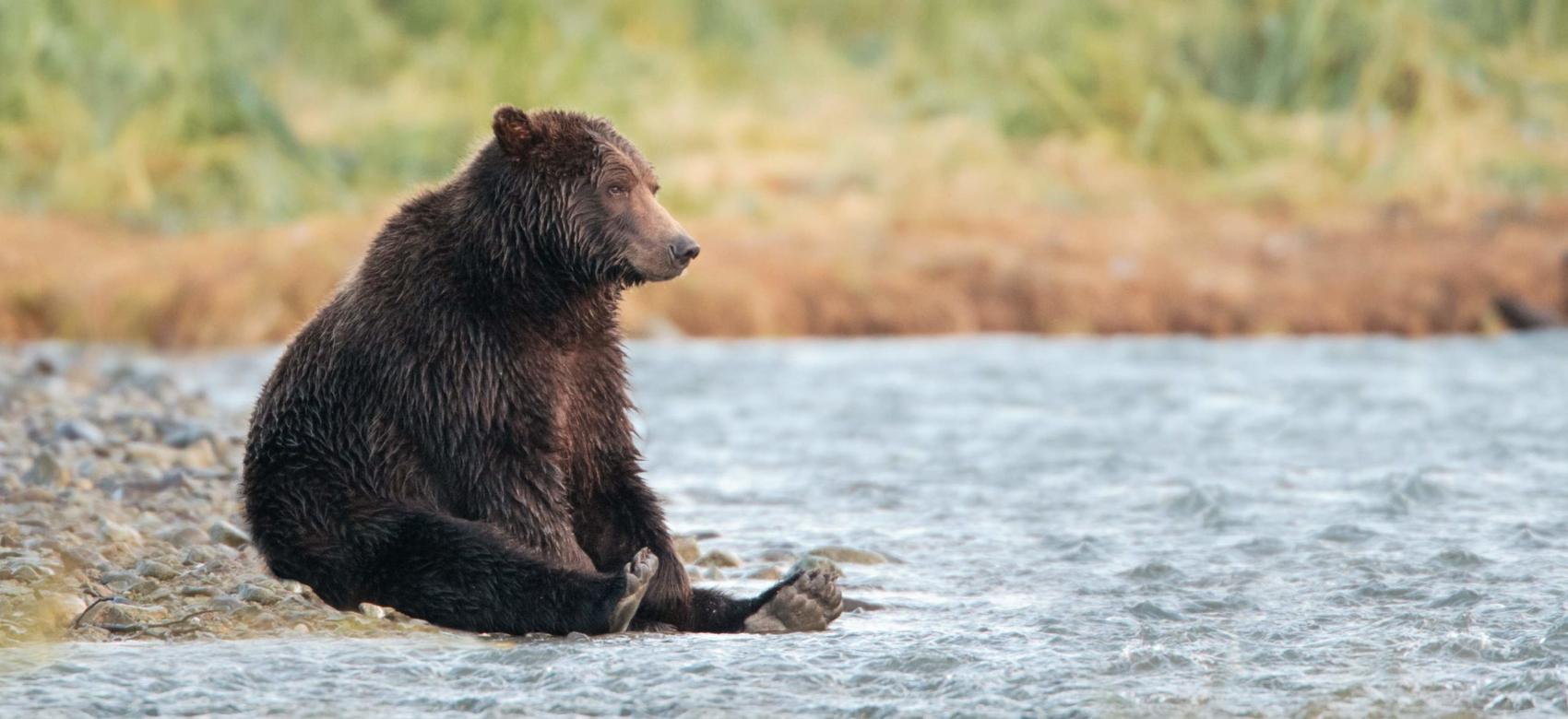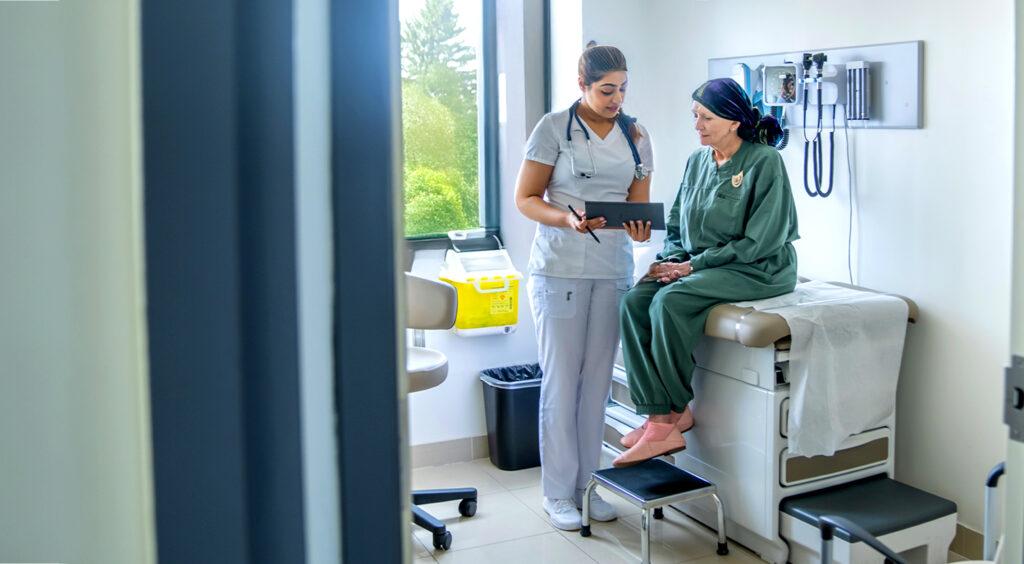BC is facing a steep decline in sockeye salmon
By Jessica Werb

Our coastal marine ecosystems are changing rapidly—and some species are moving on
Perhaps no animal is more iconic to BC than the sockeye salmon. For millennia, it’s been part of the history, livelihood and culture of Indigenous peoples, and it plays an integral role in the province’s tourism, fishing and restaurant industries. So it’s hard to imagine a time when, instead of an obligatory box of smoked salmon, visitors to BC might return home with a vacuum-sealed package of squid or tuna. But, say UBC marine biologists, this scenario isn’t just hypothetical—thanks to climate change, it’s just a matter of time.
“The ocean is changing already,” says Dr. William Cheung, director of UBC’s Institute for the Oceans and Fisheries. “It’s warming up, getting more acidic, and it’s losing oxygen as well. This is not something we’re expecting to happen, it’s something that we are experiencing now, particularly for sockeye salmon.”
While this year’s sockeye run in some parts of BC is promising, the overall trend is bleaker. The sockeye population has been in decline for a century—since 1913, returns in the Skeena River have dropped by 75 percent —and while there are many factors at play, says Dr. Cheung, “climate change is definitely one of them.”
Sockeye, he explains, are simply not well adapted to living in warmer temperatures. “They don’t do well with the warming waters in BC, both in fresh water and in their marine phase,” he says. “There are already many studies showing that their performance will be lower in warmer waters. There will be higher mortalities and less reproductive output when they go back to the river to spawn. And in the oceans, their food source is also affected by the warmer oceans.”
Dr. Cheung’s computer modelling research has found that extreme events, like the heat wave that struck BC last summer, only intensify the pressures faced by sockeye. “They’re going to decrease in abundance,” he says. “Our most recent research showed that on top of continuous changes in the average conditions of the oceans, when heat waves occur it actually doubles the impact of what they’re already experiencing with the long-term changes in ocean conditions.”
As coastal BC waters become less suitable for sockeye salmon, the waters further north are proving more habitable. “We know that sockeye salmon fisheries in Alaska are doing really well,” notes Dr. Cheung. “That’s what we have seen for many species and also predicted from our simulation models. Species will shift their distributions to areas where the habitats become more suitable for them, particularly for more mobile species, like fish. That’s why we are seeing some species that used to occur south of the border become more common in our waters.”
Goodbye sockeye, hello tuna
Does this mean BC is heading toward a future of barren coastal waters? Not exactly.
“One category of species that, by and large, did pretty well during and after the heat wave are the non-native ones, like the Pacific oyster brought over from Japan for aquaculture,” notes UBC zoology professor Dr. Christopher Harley, who estimates that more than a billion seashore animals like mussels and barnacles died in last year’s heat wave.
While “it’s a tough time to be a mussel,” he says, it’s a different story when it comes to Pacific oysters: “It has been warm enough for them to grow in British Columbia for a long time, but not warm enough to reproduce except in two or three specific places. We may have crossed a tipping point for that. We’re seeing a lot more one- and two-year-old oysters in places around Vancouver than we used to.”
Instead of being largely confined to aquaculture, Pacific oysters are likely to start spreading further into the wild, Dr. Harley expains. “I think we’re now in a climate that’s warm enough that oysters are reproducing regularly, and that’s just going to become one of the default dominant species on the shoreline in BC now.”
And because the Salish Sea is a natural hotspot surrounded by cooler waters, he adds, migratory species may not make it all the way past the currents up from the southern US coastline.
“What you would normally expect to happen with warming is that BC will start to look more like Oregon, Oregon will start to look more like California, and California will start to look like Mexico,” he observes. “Instead, we’re getting species that are brought here either on purpose, like the oysters, or by accident, like a lot of things that rode in with oyster shipments. There’s a whole host of little snails and seaweeds that arrived by accident, and they’re from warm water areas, and they’re doing okay.”
Overall, Dr. Harley predicts, “our ecosystem is going to start to look strangely like an East Asian ecosystem, with some of the dominance being things like Pacific oysters.” We can also expect more Albacore tuna and Humboldt squid, he says, as well as sharks. “When we have warm water events, you tend to see all these more typically southern species of fish showing up, because they can swim far enough to follow the temperature that they like,” he explains. “You see certain species of sharks show up in warm water years that you wouldn’t see commonly otherwise. Tuna is coming further north in warm-water years. And we’ll definitely be getting some of the squids that are normally associated with warmer waters.”

Mitigation and adaptation key to protecting our waters
The fact that we’ll be seeing more local tuna, squid and oysters in the future is no reason to be complacent about protecting our ecosystems from climate change, warns Dr. Cheung.
“Overall, in terms of biodiversity, there will be net negative impacts,” he stresses. “We’re not just seeing increasing temperatures and lower oxygen, but we’re seeing more occurrences of pathogens and viruses and diseases that are more associated with warmer water. We know some harmful algae blooms are related to ocean temperature, for example. All this has negative impacts in general on marine ecosystems, no matter whether a species is warm-water or cold-water adapted.”
Addressing these changes to our marine coastline, says Dr. Cheung, is urgent, and will require a combination of mitigation and adaptation measures.
“We know that the oceans are going to change in the next few decades, no matter what we do now,” he observes. “Doing adaptation is very important in helping local marine life and dependent human communities. We know that what we call nature-based solutions for the oceans can contribute to mitigation as well as adaptations. For example, protecting and expanding some of the coastal vegetation, like kelp forest and sea grass, that we know from scientific research help moderate local climate ocean conditions.”
Reducing non-climatic stresses, such as pollution and overfishing, which exacerbate the impacts of climate change on marine life, is also critically important, Dr. Cheung notes.
“We now have a lot of science and knowledge that can help inform us about how to reestablish that relationship with the oceans,” he adds. “We also have traditional Indigenous knowledge about how to relate to the environment and the oceans, and we now recognize that it’s very valuable for us to learn from. We’re at the point where we are ready to take action.”
Find out what you can do to help protect BC’s marine ecosystems.
Jessica Werb is a freelance writer for UBC Brand and Marketing. This article was published on August 22, 2022. Feel free to republish the text of this article, but please follow our guidelines for attribution and seek any necessary permissions before doing so. Please note that images are not included in this blanket licence.


